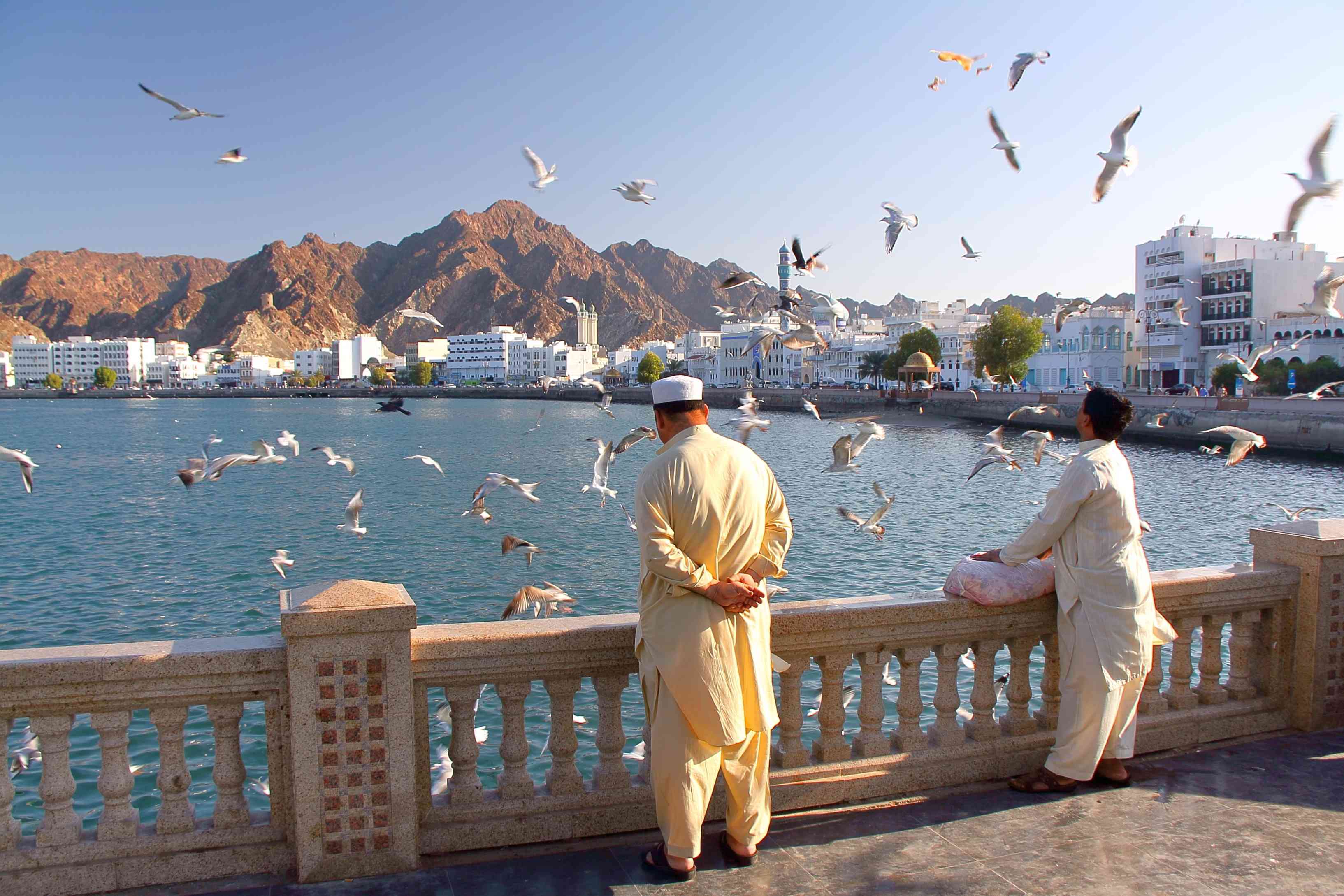History & Heritage
4.9.2019
Discover Muscat, Oman, an architectural jewel on the waterfront

Far from the imposing buildings of Dubai, the Omani capital cultivates a sense of aesthetics linked to tradition. A typical city, on a human scale, which stretches along the coast and reserves a thousand surprises: districts with diverse atmospheres, an ancient souk, immaculate architecture and the blue of the sea in the background. Discover the many facets of Muscat.
White as an aesthetic value
From buildings to historical monuments and small houses, in Muscat everything is white or almost white. An aesthetic requirement wanted by the city, which is sometimes declined in sand or pastel shades. To obtain this monochrome effect, the different structures are bleached with lime. This unified aspect magnifies the city’s architecture, which includes domes, arches, fantastic ornamentation and walls. Here, there are no dizzying towers, but a set of majestic and refined buildings to contemplate endlessly.
The Muttrah district and its souk
A neighbourhood, an atmosphere. This is the promise of the Omani capital. Your itinerary can start with the old Muttrah district, located along the ledge between Al-Mina Street and Al-Riyam Park. Ideally, you should come early in the morning, when fishermen return to port and remove fish from the nets. Along the cornice, the walk continues, towards the souk. A place supported by sublime decorative elements (painted ceilings, beams decorated with motifs) and from which one can admire the minaret of the Blue Mosque which borders the main entrance of the souk. On the spot, you can be intoxicated by the heady scents of incense, the sunny smell of spices and the explosions of colour of the goods.

Old Muscat
A few steps from the souk, along the sea, you can easily reach the old part of the city. The one that concentrates the majority of historical monuments, such as the forts Al Jalali and Al Mirani perched on huge rocks and overlooking the sea. But it is the royal palace Al-Alam, the place where Sultan Qaboos was received, that made the reputation of old Muscat. Rebuilt in 1972, the building displays a magical palette of blue and gold shades.
The Great Mosque of Sultan Qaboos
Sultan Qabus wanted to think big. On the occasion of the 30th anniversary of his rise to power, he offered the city a grandiose religious building. A mosque that can accommodate up to 20,000 faithful, inaugurated in 2001 and located in the Al Ghubrah district. On the architectural side, the place of worship is adorned with a succession of arcades topped with several domes, minarets echoing the 5 pillars of Islam, basins dotted with frangipani trees and a flowery garden. The interior is not to be outdone, with a main prayer room housing a 4,263 m² Persian carpet and walls entirely covered in white marble. The latter are works of art in themselves. They reveal a flowering of calligraphic inscriptions and squares dressed in floral motifs. Magistral.

popular

